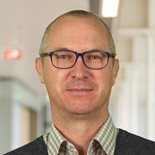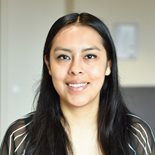Key objectives
- To generate patient-specific stem cell-derived retinal cells, organoids and organ-on-a-chip models
- To develop and establish readouts with sufficient throughput to evaluate the functionality of the in vitro models
- To generate and comprehensively phenotype animal models representing retinal degenerative diseases
- To examine the effectiveness and safety of experimental therapeutic interventions for retinal degenerative diseases in representative in vitro and in vivo models
Our concept Model systems
Platform A’s primary objective is to develop clinically relevant retinal models that accurately reflect human retinal health and disease.
learn moreOur concept Model systems
Platform A’s primary objective is to develop clinically relevant retinal models that accurately reflect human retinal health and disease.
The focus is on innovative iPSC-derived in vitro models as well as relevant and representative in vivo models (mouse, rat, and zebrafish). By integrating these models, we aim to identify novel disease mechanisms, test therapeutic targets, and develop innovative interventions aligned with this project's pillars. These models allow us to replicate the complex morphology, physiology, and pathophysiology of the human retina. We will establish and implement molecular and functional readouts (including electrophysiology) to assess retinal function with the highest precision and cost-effectiveness. This approach will accelerate therapeutic development, ultimately facilitating translation to clinical trials.
Our approach
Platform A consists of two work packages.
Work Package 4.1: Patient-specific stem cell-derived retinal cells and retinal in vitro models
Work Package 4.2: Animal models for visual examination of therapeutic interventions for retinal degeneration
Our innovation
By ultimately combining in vitro models with patient-based in vivo models for retinal degeneration, we gain deeper insights into disease pathology and the effectiveness of experimental therapeutics.
learn moreWP leaders
Zohreh Hosseinzadeh
About me
I am Group Leader of Cell Biology of Vision, developing functional organoids derived from iPSCs of both healthy individuals and patients, leveraging cutting-edge technologies such as electrophysiology, advanced materials, and molecular biology. These organoids replicate the structure and function of the retina and are used to model retinal diseases.
Contribution to Lifelong VISION
I lead platform A which is dedicated to improving and establishing clinically relevant retinal models representing human retinal health and disease.
Team
Alex Garanto
About me
I obtained my PhD from the University of Barcelona, where I investigated the function of a gene involved in inherited retinal diseases. After two postdoctoral positions, I started my own group at Radboudumc, where we focus on developing (personalized) molecular therapeutic interventions for neurometabolic and retinal rare disorders, for which, unfortunately, no effective treatment is available. Furthermore, my group also generates (personalized) iPSC-derived cellular models that are crucial for antisense technology and genome editing.
Your contribution to Lifelong VISION
Genetic therapies are advancing rapidly; however, animal models are not always suitable for assessing efficacy. iPSC technology has enabled researchers to reprogram fibroblasts or blood cells into pluripotent stem cells, which can then be differentiated into almost any cell type. In particular, my group will contribute in Platform A by developing functional readouts in complex iPSC-derived models (retinal organoids and retina-on-a-chip) for inherited retinal diseases. These functional readouts will be used to study disease mechanism and evaluate therapeutic strategies.
Amber Teppema
About me
During my last years I’ve worked with and cultured a lot of organoids. With this expertise, I recently joined the Ocular Angiogenesis Group to work on the Lifelong VISION project. I believe that good health and vision should be a priority for everyone.
Contribution to Lifelong VISION
With my knowledge I hope to contribute to the research and the innovative solutions in macular diseases within Platform A of the project, so that we will get a better understanding about the mechanisms of these blinding diseases.
Andries van der Meer
About me
Andries van der Meer heads a research group on innovative microengineered tissue culture models known as ‘organs-on-chips’. Van der Meer is the president of the European Organ-on-Chip Society (EUROoCS). He also served as chair of the Focus Group on Standardization for Organ-on-Chip of the European standardization body CEN CENELEC. He is a leading international proponent of standards-driven innovation in the field of organs-on-chips. Before joining the University of Twente in 2015, Dr. Van der Meer worked as a Senior Research Fellow at Harvard Medical School and the Wyss Institute of Harvard University, Cambridge, MA, USA. He has a Ph.D. in Biomedical Engineering (University of Twente, 2010), and a M.Sc. in Biology (University of Groningen, 2005).
Your contribution to Lifelong VISION
Van der Meer is actively working on advanced tissue culture models of the retina, known as ‘retina-on-a-chip’ models. He is one of the leading team members in the consortium’s Platform A ‘Model Systems’. He brings extensive experience from his roles in the hDMT Dutch Human Organ and Disease Model Technologies Organ-on-Chip consortium, the European Organ-on-Chip Society, and the European CEN CENELEC Focus Group on Standards for Organs-on-Chips. Van der Meer’s contributions will be crucial in advancing innovative therapeutic solutions for vision loss by driving the creation of robust model systems for testing treatments.
Céline Koster
About me
I completed my PhD in the section of Ophthalmogenetics at the Amsterdam University Medical Centers in 2022. During my PhD project, I worked on the development of differentiation protocols from stem cells towards retinal pigment epithelium cells, the development of new animal models for retinal degenerative diseases and phenotyping strategies of these preclinical models. Currently, I work as a postdoctoral researcher at the Amsterdam UMC and test experimental therapies for retinal degenerative diseases, including stem cell-derived tissue transplantation and gene therapy approaches in preclinical models.
Contribution to Lifelong VISION
My expertise is crucial in testing experimental therapies in representative and robust preclinical models in Platform A.
Ingeborg Klaassen
About me
I joined the department of Ophthalmology, Ocular Angiogenesis Group as a postdoc in 2002 and now lead the group as PI, focusing on retinal vascular diseases like diabetic retinopathy and AMD.
Your contribution to Lifelong VISION
I firmly believe that our collaborative efforts on this project will accelerate our understanding of the mechanisms behind blinding eye diseases and lead to new treatments. I will contribute my expertise in basic retinal research in Pillar 2 and the development of in vitro models in Platform A of lifelong VISION.
Ivar Noordstra
About me
After working as a postdoctoral research fellow at the University of Queensland, Australia (2018-2024), I joined the Human Genetics department of the Radboudumc Nijmegen in February 2025.
Contribution to Lifelong VISION
I bring expertise in molecular cell biology, with a focus on cytoskeletal dynamics and mechanobiology. Additionally, I have established various zebrafish model systems to study regeneration of the retina using advanced ablation and imaging methodologies. Within Lifelong VISION Platform A, I will coordinate the zebrafish platform to support both fundamental research and translational applications.
Paola Serrano Martinez
About me
I joined the Ocular Angiogenesis Group of the Department of Ophthalmology in 2021. My postdoctoral research focuses on the study of vascular dysfunction in ocular diseases, such as age-related macular degeneration.
Contribution to Lifelong VISION
My expertise in complex in vitro vascular models, such as stem cell-derived vascular organoids, would contribute to the joint effort of Lifelong VISION for building up a model of the back of the eye to screen targeted therapies in Platform A.









